The mystery behind the self-fuming hills for centuries
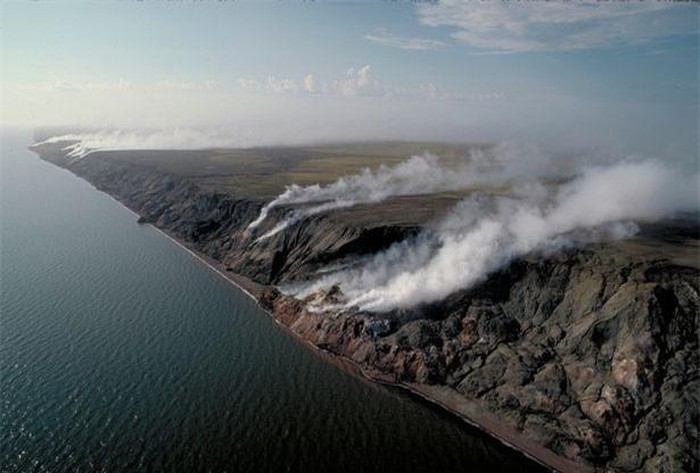
Smoking Hill is located east of Cape Bathurst Cape, northwestern Canada, where a strange natural phenomenon occurs. Without any exploitation industry or any other human influence, the hillsides along the coast here naturally smoke continuously.
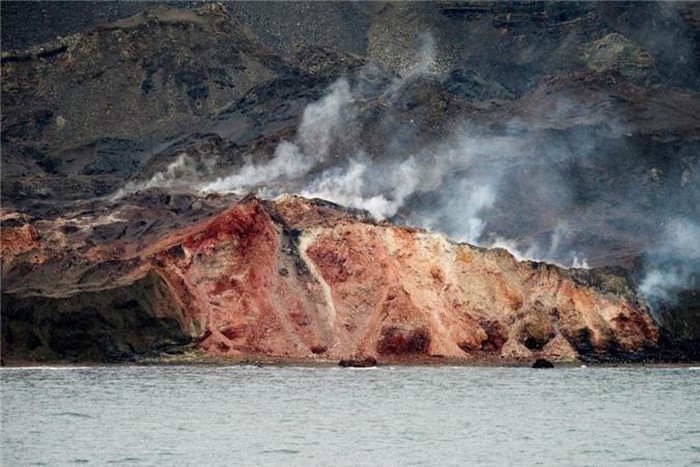
It was discovered in the early 1800s by Captain Robert McClure, Irish explorer. He went to the North Pole in search of Sr John Franklin, the leader of the expedition who disappeared while on his way to explore the northwestern waters of the maple leaf country.
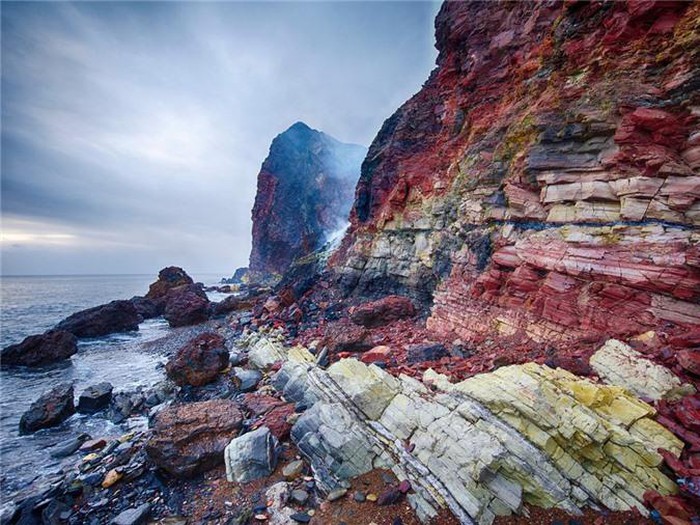
Upon seeing the smoke, the captain ordered the crew to investigate the location, in case it was a signal from the missing explorer. However, upon reaching the hill, Robert McClure saw no sign of life. Whether summer or winter, the red hills still smoke white non-stop.
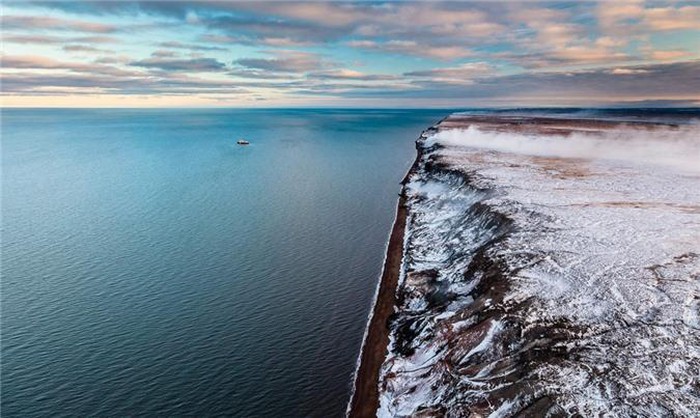
Initially, explorers believed volcanic activity caused the hills to burn. However, the correct scientific explanation for this phenomenon is that centuries-old smoky hillsides originate from oil shale, a sedimentary rock rich in coal and brown coal, located underground in the site. field.
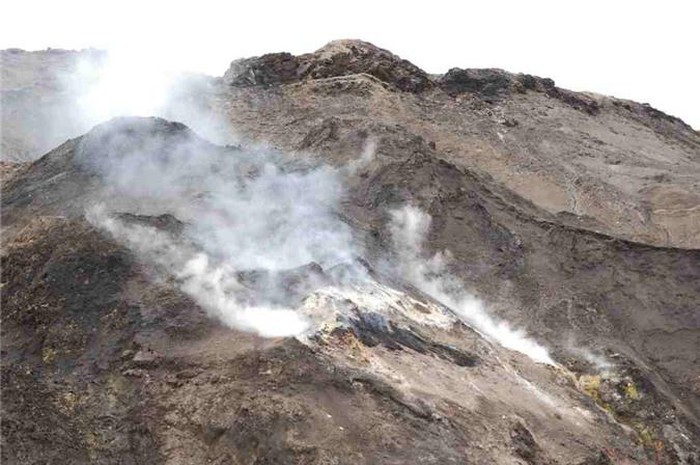
According to Atlas Obscura, the giant rock formations ignite spontaneously when the hills are eroded and exposed to oxygen. This process also produces eye-catching rainbow colors with layers of dark red and white mud rock.

There are no roads leading to this area, so visitors can only reach this place by plane, helicopter or boat. The community closest to Smoking Hill is located in Paulatuk, a village in Inuvik, Canada, more than 100 kilometers east.

The cliffs are named after explorer John, the first European to see this unique site on an expedition in 1826, before he disappeared.
You should read it
- Things to know about smoke alarms
- How to Clean Smoke Buddy
- Shocking experiment about damage to the lungs and throat when you smoke a pack of cigarettes
- Smoke - The killer killed invisible in fires
- The mystery of the century 'bright night like day' has been decoded
- Why often have white smoke streaks in the sky after the plane flies over?
- Memorize with a curving screen like a flying dragon's aurora
- Building the hair of the mysterious death of nine Soviet scientists
May be interested
- Medical mystery: The girl miraculously revived after a night of freezing
 37 years ago, jean hilliard (usa) miraculously revived after being frozen for 6 hours, surprising the doctors.
37 years ago, jean hilliard (usa) miraculously revived after being frozen for 6 hours, surprising the doctors. - The sky of blood, the mysterious natural phenomenon challenges the intelligence of modern scientists
 in april 2016, chalchuapa and el salvador's sky was covered by a scary red for about 1 minute and quickly faded into light pink.
in april 2016, chalchuapa and el salvador's sky was covered by a scary red for about 1 minute and quickly faded into light pink. - The inexplicable mystery of the legendary 'ghost island' lies in the middle of the Atlantic Ocean
 hy-brasil, the name that makes navigators and historians take hundreds of years to search and answer but still has no answer. after nearly 200 years of disappearance, it appeared in the message of the aliens that surprised and curious many people.
hy-brasil, the name that makes navigators and historians take hundreds of years to search and answer but still has no answer. after nearly 200 years of disappearance, it appeared in the message of the aliens that surprised and curious many people. - The 'Blood Falls' in Antarctica, hundreds of years of mystery has been decoded
 blood-red liquid filled with spills flowing from the glacier pouring into bonney lake is called blood falls, which stands out from the white landscape of antarctica which is a mystery that scientists always want to look too transparent over a century ago.
blood-red liquid filled with spills flowing from the glacier pouring into bonney lake is called blood falls, which stands out from the white landscape of antarctica which is a mystery that scientists always want to look too transparent over a century ago. - What you need to know about the mysterious black hole in the Indian Ocean
 the black hole was discovered by dutch geophysicist felix andries vening meinesz in 1948 and remains a mystery to this day. here's everything you need to know about the mystery of the black hole in the indian ocean.
the black hole was discovered by dutch geophysicist felix andries vening meinesz in 1948 and remains a mystery to this day. here's everything you need to know about the mystery of the black hole in the indian ocean. - The great mystery of the Solar System has just been unlocked
 the upper atmosphere of saturn is very hot even though they are much farther from the sun than earth. for a long time, this heat source has become one of the great mysteries of the solar system, causing scientists a headache.
the upper atmosphere of saturn is very hot even though they are much farther from the sun than earth. for a long time, this heat source has become one of the great mysteries of the solar system, causing scientists a headache. - New research confirms: The mystery of 'dark energy' may not exist
 the universe may not expand at an accelerated rate after that, meaning that the dark energy mystery may not really exist, according to a new study.
the universe may not expand at an accelerated rate after that, meaning that the dark energy mystery may not really exist, according to a new study. - The strange object is from ancient Roman times, the mystery cannot be decoded
 the blocks of twelve-sided, hollow objects that appeared from 200 ad were discovered by archaeologists in the present-day france and southwestern germany but without any notes about the mass this strange body.
the blocks of twelve-sided, hollow objects that appeared from 200 ad were discovered by archaeologists in the present-day france and southwestern germany but without any notes about the mass this strange body. - The mystery of no solution, 16 feet of people drifting to the coast for 10 years scared many people
 since 2007, there have been about 16 human legs still in shoes on the coast of british columbia, canada. so far, no one knows who those legs are, from where to make this frightening event become the unexplained mystery of the 21st century.
since 2007, there have been about 16 human legs still in shoes on the coast of british columbia, canada. so far, no one knows who those legs are, from where to make this frightening event become the unexplained mystery of the 21st century. - How to play Harry Potter game: Hogwarts Mystery on the computer
 to play harry potter: hogwarts mystery, a game reminiscent of the magical world of harry potter on a computer, you can through the android emulator.
to play harry potter: hogwarts mystery, a game reminiscent of the magical world of harry potter on a computer, you can through the android emulator.










 She has the longest nose in the world
She has the longest nose in the world See 14 interesting rare natural phenomena
See 14 interesting rare natural phenomena See active volcanoes around the world
See active volcanoes around the world 15 strange images showing the diversity of nature, sometimes also unexplained by science
15 strange images showing the diversity of nature, sometimes also unexplained by science The strangest photos on Mars in the world: All rocks and earth overlooking everything from animals and plants to even human faces
The strangest photos on Mars in the world: All rocks and earth overlooking everything from animals and plants to even human faces The images show that this world exists incredible anomalies
The images show that this world exists incredible anomalies